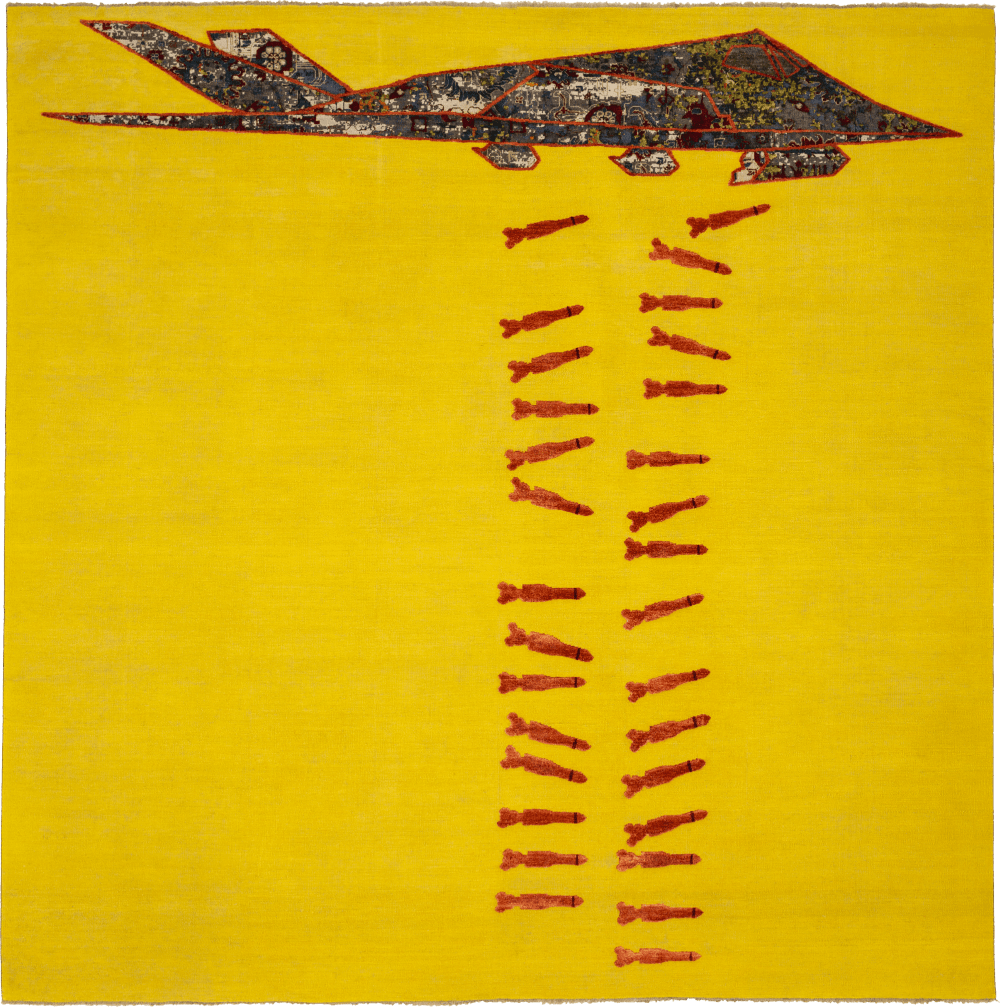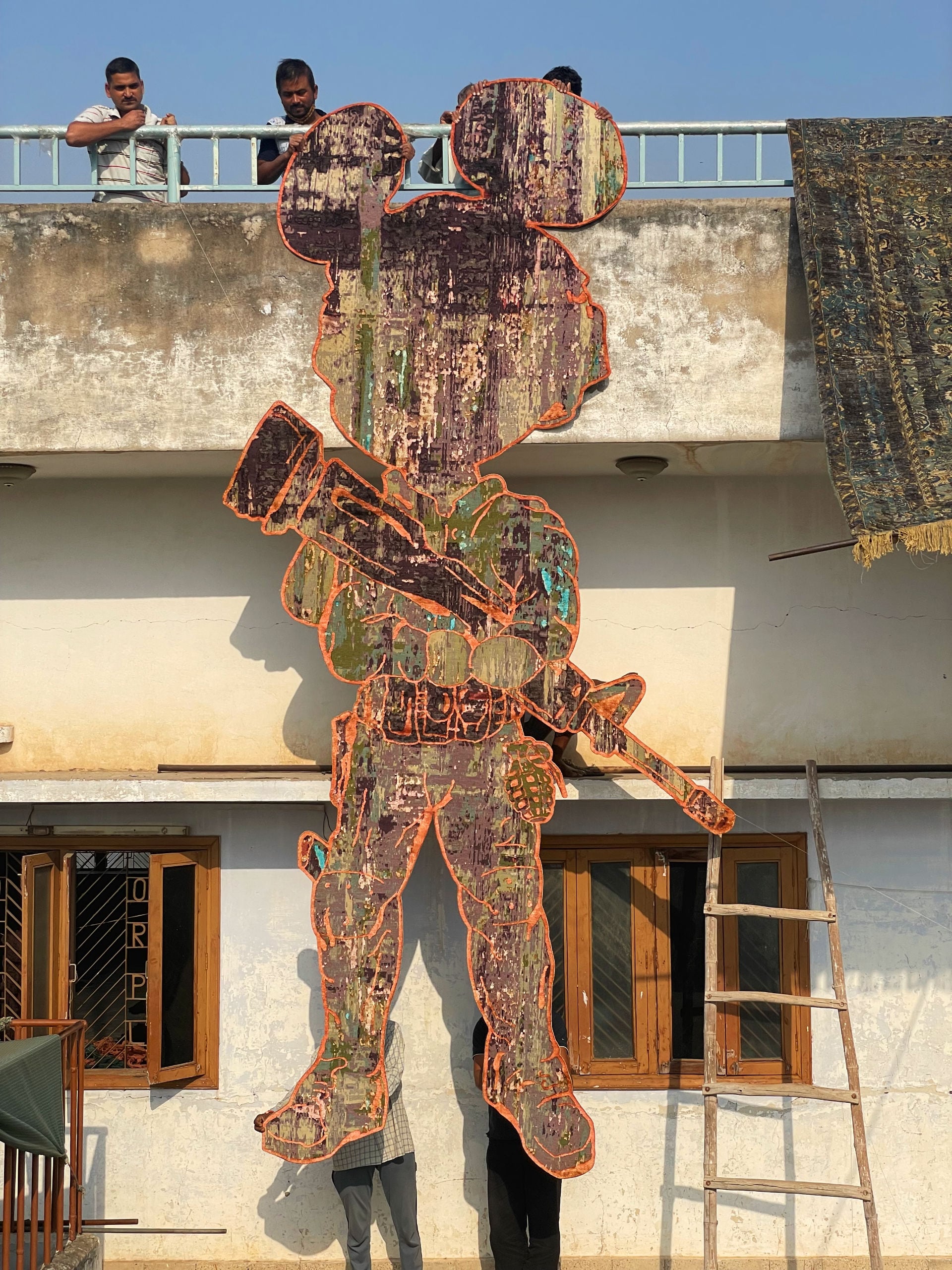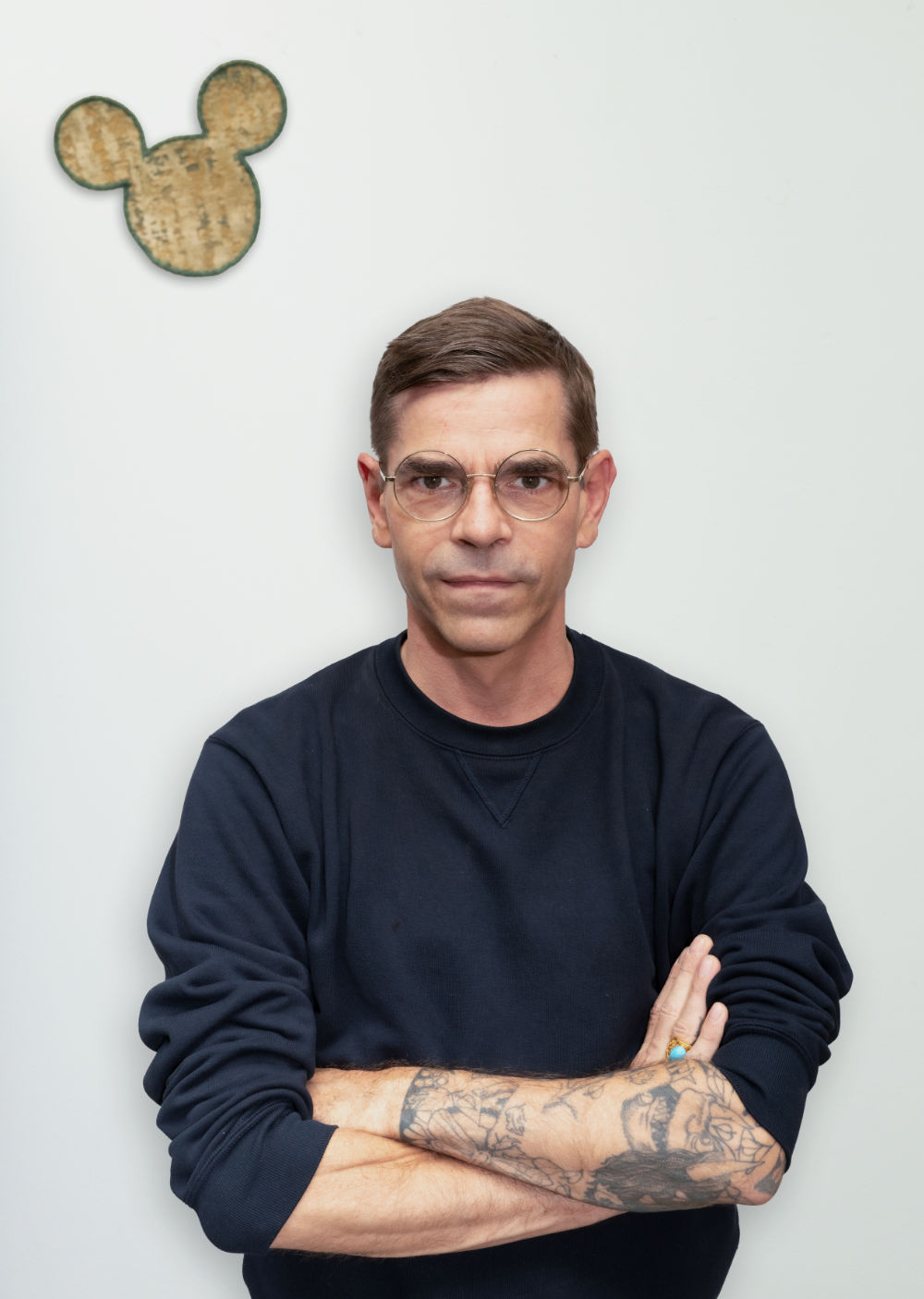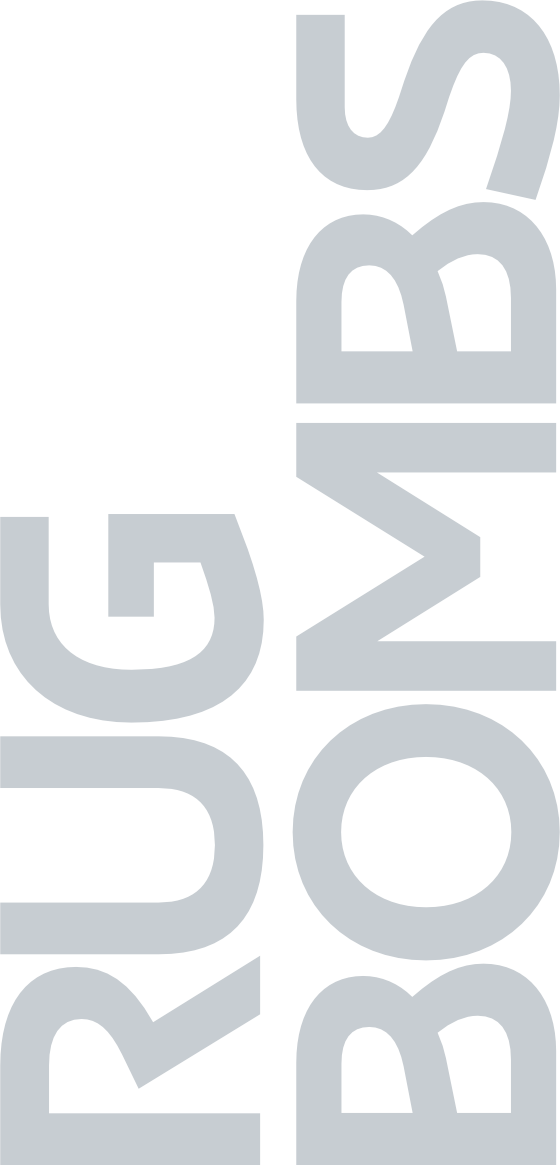

Scroll Down
Rugs have always told the stories of their time in their many millions of knots tied together out of wool and silk. Jan Kath sees himself as continuing this tradition with his work RUG BOMBS, which is being shown for the first time at the Alte Brüderkirche church in Kassel. The artist addresses the theme of violence and the military conflicts of previous decades in eleven large-scale tapestries. Featuring clear links to pop art, Kath’s designs dissect familiar image scenes. Fighter jets, tanks, incessant bombardment – he cuts out, frames, changes context, collages, and in doing so creates new levels of viewing.
JET
Wool & Silk on Cotton
11 x 11 Knot
175 cm x 243 cm
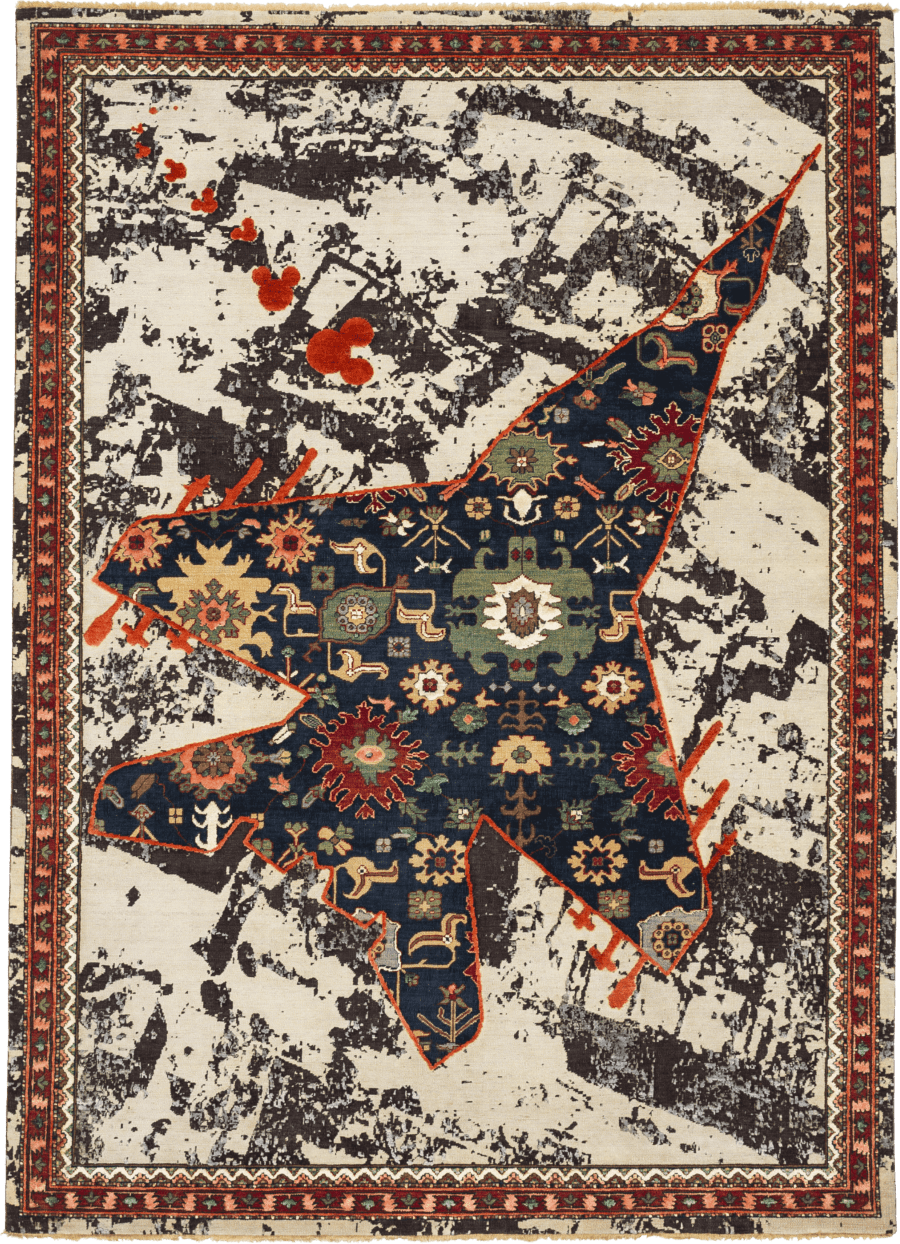
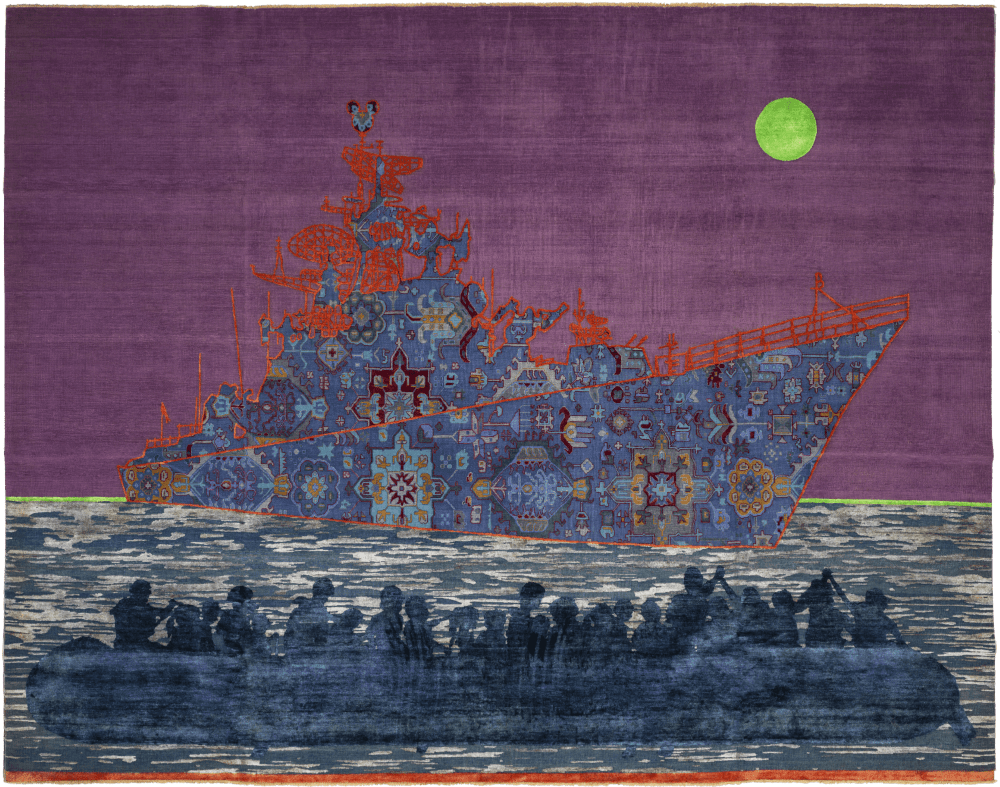
ON HIGH SEAS
Wool & Silk on Cotton
11 x 11 Knot
394 cm x 307 cm
Tanks, fighter jets, bombed-out cities, people fleeing. The subjects in RUG BOMBS are a savage depiction of the world’s current situation.
The events that led me to focus on the topics of war and violence date back to many years ago and have their origins in my childhood. The conflict in Ukraine was not the trigger for this work. Rather, it was the war in Iraq and its consequences. Abu Ghraib and Guantanamo took up a great deal of my attention and changed something in me. The dirty war in Syria and the mass refugee movements resulting from it did just the same thing, too.
What memories do you mean?
I was born in 1972. Even though I did not experience the Second World War, it was something that was always present during my childhood and youth. I was very close to my grandfather. He was a Wehrmacht soldier and was stationed in Poland, France, and Russia. He told me about all that in great detail: He took me back to the trenches and to the battles just outside Stalingrad; he took me back to the times when he lost his eye and most of his comrades.
Those are not easy subjects for a child.
I soaked up every detail like a sponge. I always wanted to know more. My aunts fled Silesia in a dramatic escape on a horse-drawn cart, and their memories stirred and left a mark on me. I have always been a person with a vibrant imagination. The things people tell me manifest in my memory in a highly visual way. The conversations from back in those days, the images from recent decades, and the collection of materials that I have maintained for a long time – all that has gone into this exhibition. I have been working on RUG BOMBS specifically since about 2015.
In Afghanistan, there is a tradition of making “war rugs.”
With the Soviet invasion of 1979 having left an impression, the people there started incorporating tanks and rifles into their otherwise traditional patterns. Rugs at their core are nothing other than images for the floor and the wall where people tell their stories. This is even the case with the oldest known rug, the Pazyryk carpet, which is dated back to the 4th century BCE. It depicts a procession of 28 horses and their riders. The horses have a trimmed mane and braided tail while the horsemen have mustaches, wear cloaks, and carry a quiver with a bow and arrows. Combat situations definitely have been and still are the most popular subjects depicted, alongside hunting and wedding scenes. However, the narrative of a rug is also shaped by the person who made it or for whom it was made. Whether for kings or farmers; or Christians, Muslims, or Buddhists, many different beliefs and world views go into them. I feel deeply connected to this tradition and see myself as an active part of it.
You create your designs in a digital format first. Then, you have them knotted by hand at your ateliers.
It is a little bit crazy how the weavers basically help me to express my personal language. I send them high-resolution pictures and they transform every pixel into a knot patiently and persistently. I have the utmost respect for the work involved in this craft. I am extremely conservative when it comes to quality and inspect the rugs closely. We use only hand-combed and hand-spun highland wool and use production techniques that are hundreds of years old. The production process takes months. The slow growth of a virtual template becomes a part of the history.
You continually revive traditional patterns in RUG BOMBS. Why?
Be it Bijar, Tabriz, or Serapi, I grew up with these patterns. I use them to tickle viewers’ aesthetic habits at the same time. It is a very deliberate, disturbing effect. The rugs attract our gaze, allure our eyes and hands, and ensure that the subjects depicted penetrate our perception more deeply.
In addition to the rugs that depict the “War Rug” subjects in a broader sense, there is a photorealistic piece portraying a family in their living room. There is a father, a mother, a child, and a cat. It would be idyllic if it were not for the head of the family proudly brandishing an automatic rifle in the air. What is the story behind this?
The photograph, taken by Kyle Cassidy, was published in his illustrated book “Armed America” in 2007. It shows American families who own weapons, with every second American being part of one statistically. I found Kyle Cassidy’s work to be very impressive and got the permission to portray one of his image subjects in textile form. The content of this piece is an antithesis to the almost archaic appearance of the “War Rugs.” Consequently, it acts as a step back and asks about the beginning of history.
STEALTH
Wool & Silk on Cotton
11 x 11 Knot
250 cm x 250 cm
